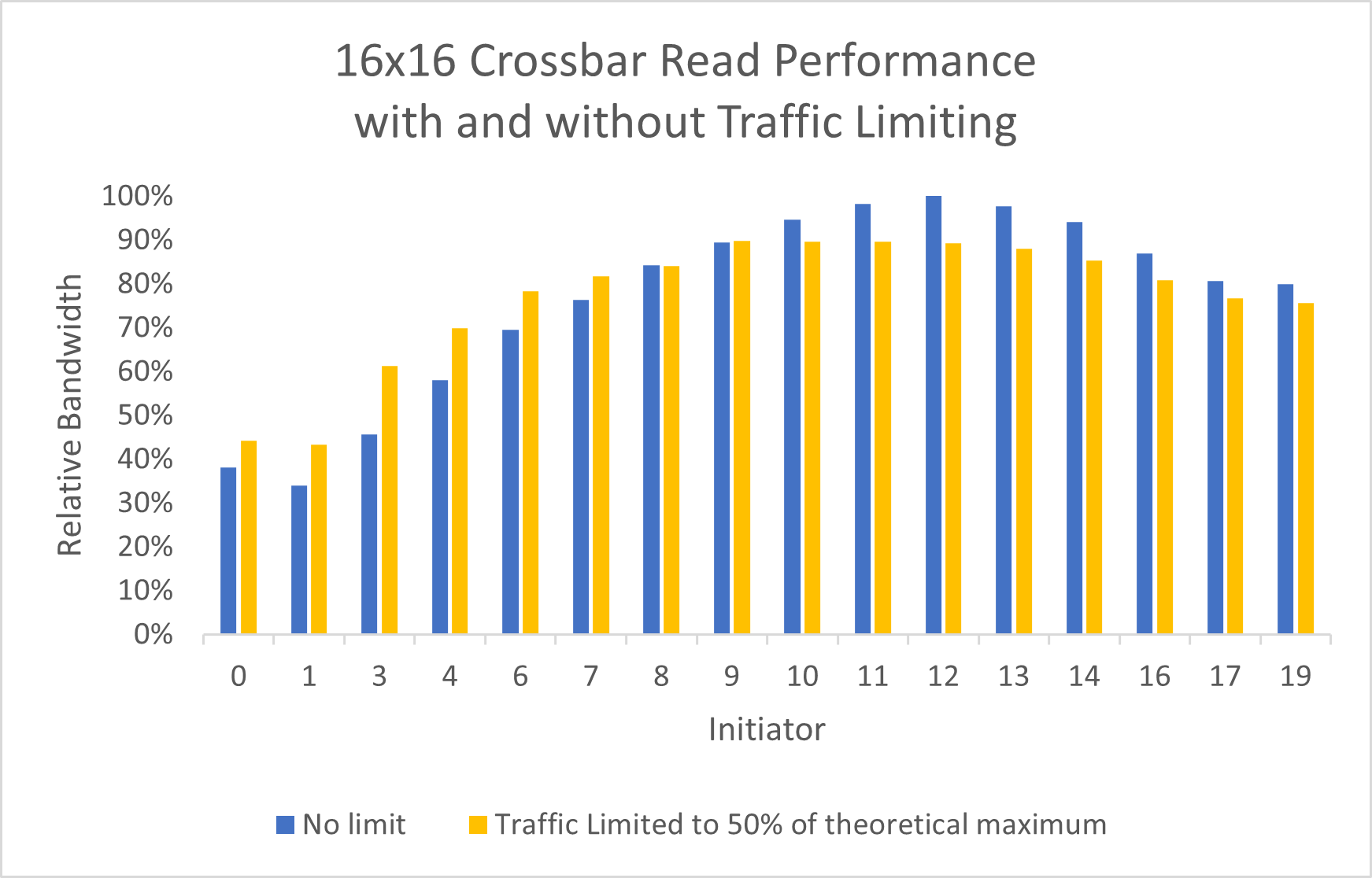Visible to Intel only — GUID: ryn1696538655665
Ixiasoft
1. Answers to Top FAQs
2. About This Application Note
3. Component Bandwidth Projections and Limitations
4. Resource Planning for Intel Agilex® 7 M-Series FPGAs
5. Factors Affecting NoC Performance
6. Debugging the NoC
7. Document Revision History of AN 1003: Multi Memory IP System Resource Planning for Intel Agilex® 7 M-Series FPGAs
4.1. Hard Memory NoC Resource Planning Overview
4.2. I/O Bank Blockage
4.3. Planning Avalon® Streaming Utilization
4.4. Planning for Initiator Blockage Impact from GPIO, LVDS SERDES, and PHY Lite Bypass Mode
4.5. Planning NoC PLL and I/O PLL
4.6. Pin Planning for HPS EMIF
4.7. Planning for an External Memory Interface
4.8. Planning for HBM2E
4.9. Planning for the Fabric NoC
4.10. Planning for AXI4-Lite
4.11. Planning NoC and Memory Solution Clocks
5.1. Recommended Performance Tuning Procedure
5.2. NoC Initiator and Target Clock Rate
5.3. Recommended NoC Design Topologies
5.4. Traffic Access Pattern and Memory Controller Efficiency
5.5. Traffic Access Pattern Due To Multiple Traffic Flows
5.6. Transaction Size
5.7. Congestion Interaction
5.8. Bandwidth Sharing At Each Switch
5.9. Exceeding NoC Bandwidth Limits
5.10. Maximum Number of Outstanding Transactions
5.11. QoS Priority
5.12. AxID
5.13. Example: 2x2 HBM Crossbars
5.14. Example: 16x16 Crossbar
Visible to Intel only — GUID: ryn1696538655665
Ixiasoft
5.14. Example: 16x16 Crossbar
Consider an example with a 16x16 crossbar, with random 64B traffic.
Unlike Worked Example: 2x2 HBM Crossbars, this application cannot easily make use of larger transaction sizes. The throughput of initiators on one side is low. By limiting the bandwidth of the center initiators, you can trade-off the performance of the center initiators to allow more bandwidth for the initiators on the left.
Figure 39. 16x16 Crossbar Read Performance With and Without Traffic Limiter

